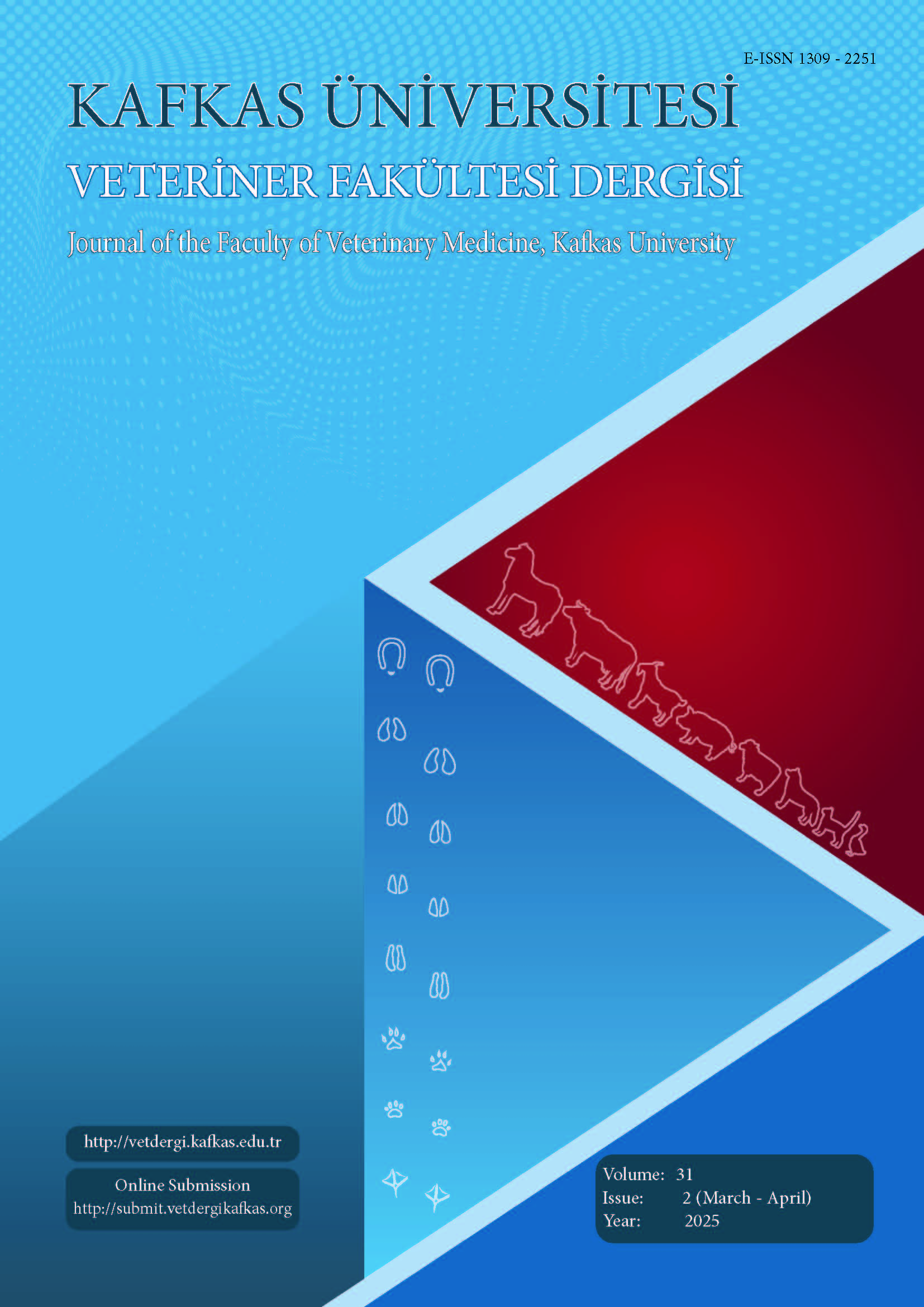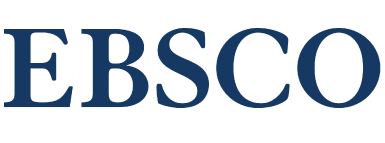
This journal is licensed under a Creative Commons Attribution-NonCommercial 4.0 International License
Kafkas Üniversitesi Veteriner Fakültesi Dergisi
2025 , Vol 31 , Issue 2
Evaluation of Gum Arabic Extract for Enhancing Growth Performance, Blood Parameters, Oxidative Status, Gut Microbiota, and Organ Histology in Heat-Stressed Rabbits
1Department of Biology, College of Science, Princess Nourah bint Abdulrahman University, P.O. Box 84428, Riyadh, 11671, SAUDI ARABIA2Department of Biological Sciences, College of Science, University of Jeddah, P.O. Box 80237, Jeddah 21589, SAUDI ARABIA
3Department of Biology, College of Science, Jazan University, P.O. Box. 114, Jazan, 45142, SAUDI ARABIA
4Biological Sciences Department, College of Science and Arts, King Abdulaziz University, Rabigh 21911, SAUDI ARABIA
5Department of Biology, College of Science, King Khalid University, Abha, 61421, SAUDI ARABIA
6Prince Sultan Bin Abdelaziz for Environmental Research and Natural Resources Sustainability Center, King Khalid University, Abha 61421, SAUDI ARABIA DOI : 10.9775/kvfd.2024.33414 The study investigated the bioactive properties and effects of gum arabic (GA) on various biological parameters, including antioxidant, antimicrobial, anticancer, and growthpromoting activities, as well as its impact on blood biochemistry, oxidative status, immunity, and gut microbiota in heat-stressed rabbits. The main compounds in the GC/MS profile of GA were saccharides, i.e., arabinose, galactose, and rhamnose accounted for 41%, followed by phenolic acids with 36.1%. GA extract (10 %) contains 66 mg/g phenolic compounds and 24 mg/g flavonoids, demonstrating a significant % antioxidant activity of 91% and potent antimicrobial activity against pathogenic microorganisms; it also showed promising anticancer activity, reducing MCF-7 cancer cell viability by 88%. In growth performance studies, GA supplementation significantly enhanced the body weight gain, growth rate, feed conversion ratio, and performance index by 19, 18, 10, and 30% compared to the control. GA improved red blood cell production, liver function, and lipid metabolism. GA treatments significantly increased red blood cell count, hemoglobin, hematocrit, mean corpuscular hemoglobin, mean corpuscular volume, and mean corpuscular hemoglobin concentration by 5-15% compared to the control. Albumin, total protein, and globulin levels increased by 10-20%, indicating improved protein synthesis and liver function. Liver and kidney parameters, such as ALT, AST, creatinine, urea, triglycerides, glucose, total cholesterol, and LDL, decreased by 20-40%, while HDL cholesterol increased by 15-25%, suggesting enhanced lipid metabolism and reduced oxidative stress. GA supplementation also enhanced antioxidant defense systems, increasing total antioxidant capacity, superoxide dismutase and glutathione peroxidase (GSH-Px) by 20-30% while reducing malondialdehyde (MDA) levels by 40-50%. Immunoglobulin A, G, and M levels increased by 25-35%, indicating improved immunity. GA 10% concentration significantly reduced proinflammatory cytokines (IL-1β by 78% and TNF-α by 82%) and precancerous markers (BAX and Casp-3 by 75-80%) in heat-stressed rabbits while increasing heat stress proteins (HSP70 by 291% and HSP90 by 130-210%). Histological examinations revealed that GA preserved liver and kidney integrity under heat stress, with 6% and 10% concentrations showing near-normal tissue architecture compared to heat-stressed rabbits displayed cuboidal epithelial cell necrosis and exfoliation of the brush border. Additionally, GA positively modulated gut microbiota, reducing harmful bacteria like E. coli and Salmonella by 25-40% while increasing beneficial lactic acid bacteria by 45%. It concluded that GA supplementation enhanced the growth, blood biochemistry, and immunity of heat-stressed rabbits. Keywords : Antioxidants, Blood, Cancer, Gum arabic, Heat stress, Rabbit










